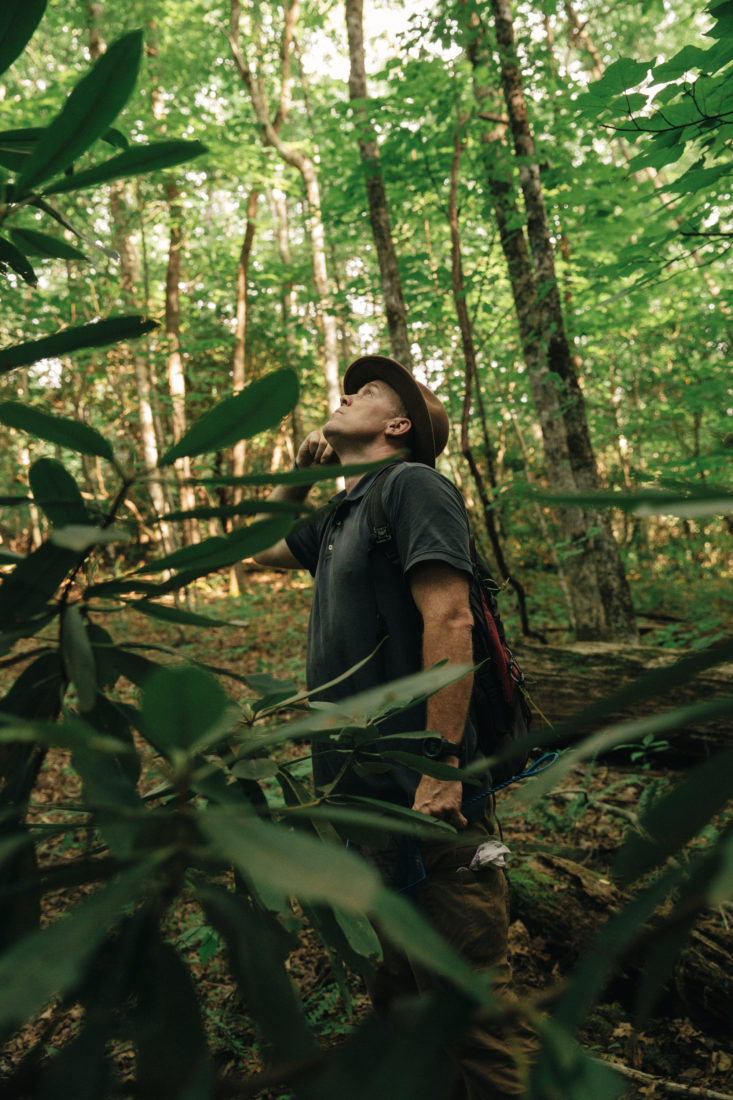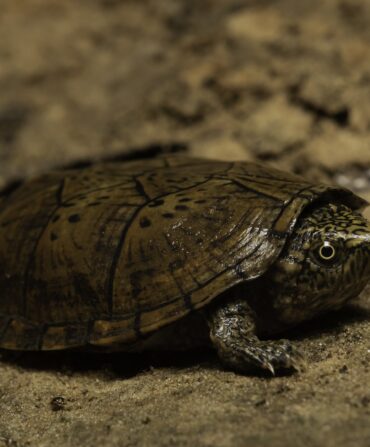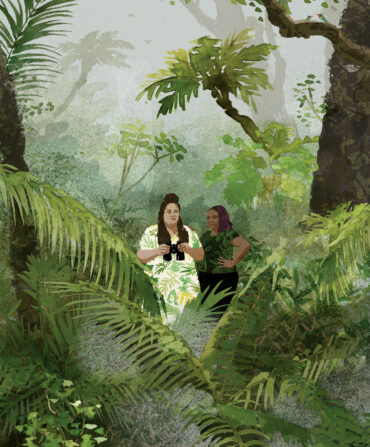A snippet of Cherokee wisdom: Do not drink the water unless it has run over a salamander’s back. From a scientific standpoint, it’s sound advice—salamanders, with their semipermeable, sensitive skin, are indicators of water quality, explains Caleb Hickman, an Oklahoma native and citizen of the Cherokee Nation. As the supervisory biologist for the Eastern Band of Cherokee Indians in North Carolina, Hickman lives at this intersection of culture and ecology.
“It’s the theme of my job,” he says. “Whether we are doing conservation, restoration management, or research, it all centers around benefiting the tribe.” The Eastern Band’s home includes the Qualla Boundary, 57,000 acres that encompass much of the flora and fauna that the Cherokee knew and relied upon before their forced removal west to what is now Oklahoma. Elk and bears roam the mountains; fish species that are found nowhere else swim the rivers; salamanders walk the forest floor; and Hickman oversees it all. He and his small team of two technicians and a lead biologist conduct some twenty-five projects a year focused on the likes of native creatures such as hellbenders and flying squirrels.

This fall, Hickman will be reintroducing young sicklefin redhorses—once-abundant fish that have likely disappeared from tribal waters due to damming—back into the Oconaluftee River, in the hopes of reestablishing what was a traditional food source. He’s also analyzing how to better use the Boundary’s nearly two hundred elk to boost tourism and bring in much-needed funding, and conducting a population study on bears. He has launched an investigation into curiously low numbers of white-tailed deer on tribal lands as well—they were so vital in the past that one of the seven Cherokee clan names is Deer.
Hickman also champions linguistic preservation. “Within the next several decades, there may not be any first-language Cherokee speakers,” he says, so he’s documenting the names of salamander species to retain and record the cultural knowledge that naming represents. With the help of a symposium of Native speakers who serve as the official Cherokee language keepers, Hickman so far has secured names for five families, six genera, and twenty-two species. The spring salamander is now recorded as the “rainmaker” for its propensity to emerge during spring showers; the Eastern red-spotted newt, “it burns,” for its toxic skin; the pygmy salamander, “basket weave–like,” for its herringbone pattern. “Cherokee is very descriptive and very precise, so it’s perfect for science,” Hickman says. “I want to reconnect people to these animals, and to tie the language to our natural resources, which I think is where it belongs.”








